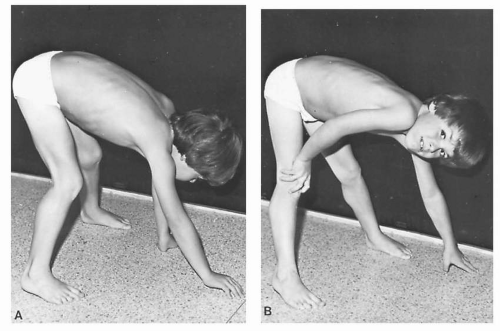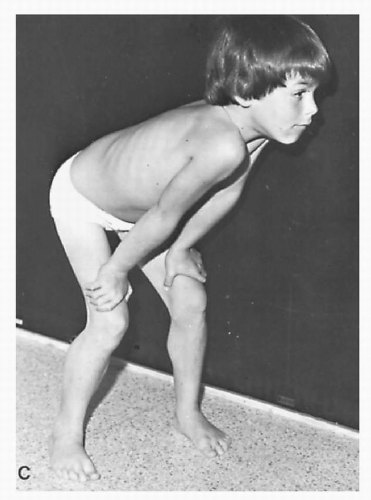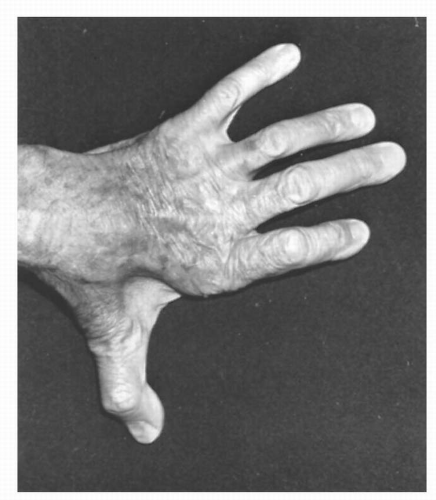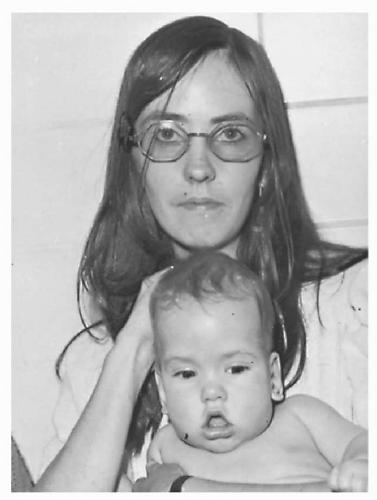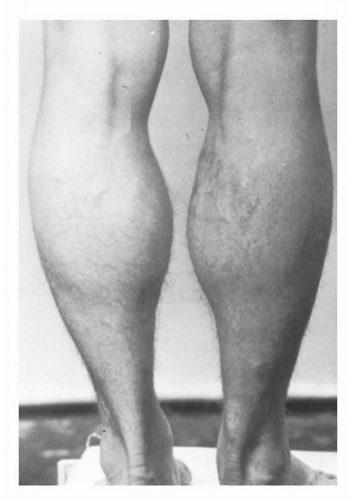Disorder |
Chromosome |
Recessive (R) or Dominant (D) |
Gene Product |
Special Features |
Motor Neuron Disease |
Spinal muscular atrophy |
|
SMA 1,2 |
5 |
(R) |
SMN and rarely NAIP protein in SMA 1,2,3 |
SMN protein mutation in 95% of Type 1,2,3 |
|
SMA 3 |
5 |
(R) and (D) |
|
SMA 4 (adult) |
Unknown |
(R) and (D) |
SMN defect in some |
Clinical overlap with progressive muscular atrophy |
Spinal and bulbar muscular atrophy (Kennedy’s disease) |
X |
(R) |
Androgen receptor |
Androgen receptor gene enlarged (multiple CAG repeats) |
Amyotrophic lateral sclerosis |
|
Sporadic (90%-95%) |
No known defect |
None known |
See text |
|
Familial (5%-10%) |
|
|
SOD-1 mutation |
21 |
(D) |
More than 90 known mutations |
SOD-1 mutation in only 20% of familial cases |
|
|
Other mutations |
2,9, 15, 18 |
(D) or (R) |
Unknown |
Mutations very rare |
Peripheral Nerve (See Chapter 18 ) |
Neuromuscular Junction |
Acquired MG |
No gene defect |
— |
— |
— |
Congenital MG |
17 |
(R) |
Subunit of acetylcholine receptor protein |
No antibodies to the receptor protein, and immunosuppression is ineffective |
Muscular Dystrophies |
Duchenne/Becker dystrophy |
X |
(R) |
Dystrophin |
Gene deletion (60%-70%); point mutation in rest |
Facioscapulohumeral dystrophy |
4 |
(D) |
Unknown |
Specific deletions in 95% on chromosome 4, but gene itself is still unknown |
Limb-girdle dystrophy (recessive) |
2,4,5,13, 15, 17 |
(R) |
2A Calpain
2B Dysferlin |
LGMD2A mildly weak
LGMD2B proximal and distant weakness (Myoshi) |
LGMD 2A,2B,2C,2D,2E,2F,2G,2H,2E,2J |
|
|
2C, D, E, F sarcoglycan defect
2G Telethonin defect
2H E-3 Ubiquitin defect
21 Fukutin-related protein
2J Titan-related protein |
LGMD 2C-J tend to have severe symptoms, some resembling Duchenne dystrophy (see text) |
Limb-girdle dystrophy (dominant) |
|
LGMD1A |
5 |
(D) |
Myotilin |
Dysarthria seen |
|
LGMD1B |
3 |
(D) |
Caveolin |
“Rippling” muscle |
|
LGMD1C |
1 |
(D) |
Laminin |
Cardiac involvement |
Emery-Dreifuss muscular dystrophy |
X |
(R) |
Emerin |
Elbow contractures and cardiac changes |
Congenital muscular dystrophy |
1,6 |
(R) |
Absent merosin in some |
Normal mentation |
9 |
(R) |
Fukutin defect |
Severe mental and developmental retardation |
Oculopharyngeal dystrophy |
14 |
(D) |
Protein regulates polyadeny-lation and mRNA size |
Ptosis, swallowing defects |
Myotonias |
Myotonia congenita |
7 |
(D) and (R) |
Muscle chloride channel |
Autosomal recessive form most common; dominant forms rare (Thomsen’s disease) |
Myotonic dystrophy (DM1) |
19 |
(D) |
Myotonin |
Gene has triplet (CCTG) repeats
Disease worse with increasing number of repeats |
Myotonic dystrophy (DM2 or PROMM) |
3 |
(D) |
An mRNA binding protein |
Gene has multiple CCTG repeats |
Inflammatory Myopathies |
Inclusion body myositis |
9 |
(R) |
Unknown |
Rare autosomal dominant form (most IBM is sporadic) |
Glycogen Storage Diseases |
Phosphorylase deficiency (McArdle’s) |
11 |
(R) and (D) |
Muscle phosphorylase |
Exercise intolerance, cramps |
Acid maltase deficiency |
17 |
(R) |
Acid maltase |
Fatal in infants; moderately severe in adults |
PFK deficiency |
1 |
(R) |
Phosphofructokinase |
Exercise intolerance |
PGAM-M deficiency |
7 |
(R) |
Phosphoglycerate mutase |
Exercise intolerance |
PGK deficiency |
X |
(R) |
Phosphoglycerate kinase |
Myopathy rare |
LDH deficiency |
11 |
(R) |
Lactic dehydrogenase |
Myopathy rare |
Debranching enzyme deficiency |
21 |
(R) |
Debranching enzyme |
Survival to adulthood common |
Branching enzyme deficiency |
3 |
(R) |
Branching enzyme |
Early death common |
Phosphorylase b kinase deficiency |
X, 16,7,6 |
(R) |
Phosphorylase b kinase |
Fatal in infancy, moderately severe in adults |
Lipid Storage Disorders |
CPT II deficiency |
1 |
(R) |
Carnitine palmitoyl transferase 11 |
Diagnosis by muscle biopsy and CPT enzyme assay |
Carnitine deficiency |
Unknown |
(R) |
Unknown |
Diagnosis by muscle biopsy and muscle carnitine assay |
Mitochondrial Myopathies |
Kearns-Sayres syndrome (KSS) |
Mitochondrial DNA |
Maternal inheritance |
Various mitochondrial proteins |
Extraocular muscle paresis, cardiac conduction block |
MELAS |
“ |
“ |
tRNA |
Lactic acidosis, stroke |
MERRF |
“ |
“ |
tRNA |
Myoclonus epilepsy, ataxia
Diagnosis by distinctive muscle biopsy changes |
Congenital Myopathies |
Myotubular myopathy |
|
Neonatal, late infantile, adult-onset forms |
X in some |
(R) and (D) |
Myotubularin in neonatal form |
Neonatal often fatal |
|
Unknown |
(R) and (D) |
Unknown in adult form |
Central core disease |
19 |
(D) |
Ryanodine receptor |
Same gene as for malignant hyperthermia |
Nemaline myopathy |
1,2,19 |
(R) and (D) |
Mutations reported in nebulin, alpha actin, alpha and beta tropomyosin, troponin |
Respiratory problems common |
Channelopathies |
Hypokalemic periodic paralysis |
1 |
(D) |
Muscle calcium channel |
Diaphragm never involved |
Hyperkalemic periodic paralysis/paramyotonia congenital/potassium aggravated myotonia |
17 |
(D) |
Muscle sodium channel |
Different mutations of sodium channel gene define unique clinical features of each |
SMA, spinal muscular atrophy; SMN, survival motor neuron; NAIR neuronal apoptotic inhibitory protein; CAG, cytosine-adenine-guanine; SOD, superoxide dismutase; MG, myasthenia gravis; LGMD, limb-girdle muscular dystrophy; mRNA, messenger ribonucleic acid; CTG, cytosine-thymine-guanine; DM, myotonic dystrophy; PROMM, proximal myotonic myopathy; PFK, phosphofructo kinase; PGAM-M, phosphoglycerate mutase; PGK, phosphoglycerate kinase; LDH, lactic dehydrogenase; CPT, carnitine palmitoyl transferase; MELAS, mitochondrial myopathy, encephalopathy, lactacidosis. stroke; tRNA, transfer RNA; MERFF, myoclonus epilepsy with ragged-red fibers. |
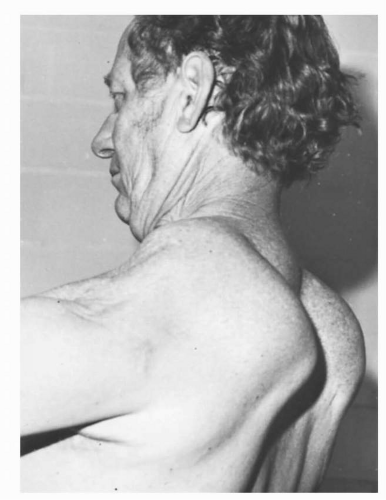
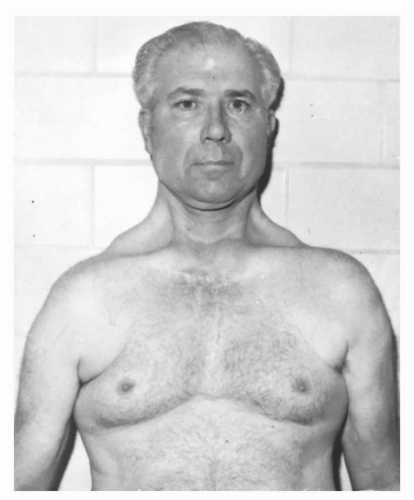
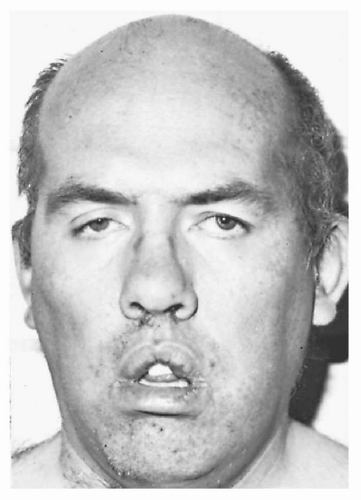
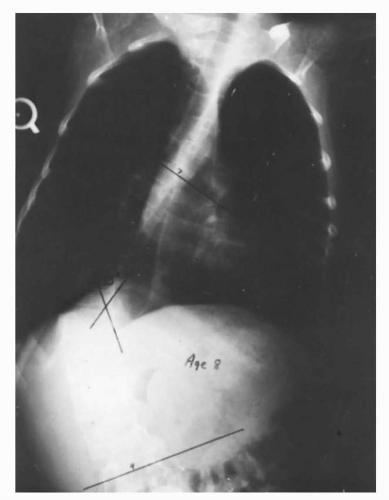


 Get Clinical Tree app for offline access
Get Clinical Tree app for offline access

